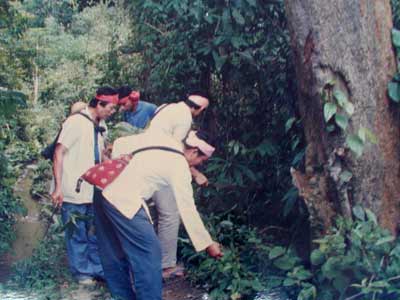 |
|
Medicinal Herbs Collecting |
The deceased botanist, Professor Cai Xitao, carried out a careful botanical study in Xishuangbanna for dozens of years; and he once said:
"if you sit on the ground in Xishuangbanna, you would find that you are sitting on at least three medicinal
herbs". This is quite true. Among the more than 5000 plant varieties in Xishuangbanna, there are about 1000 could be used as medical herbs.
"The Records for Medicinal Herbs in Xishuangbanna" recorded more than 500 varieties.
 |
 |
|
Agaric |
Flower of the Ku Teng
(Chinese Name) |
The minority groups of Xishuangbanna live in the tropical rain forests, and the special living and production conditions there could easily cause various special illnesses. In their struggles with the nature, the local folks created diversified national medicines, which helped them to maintain the health of the people, and also provided them with opportunities for survival and development. The Dai folks have a legend for the emergence of the Dai medicinal cares. It goes: in ancient time, when the ancestors of the Dai folks first immigrated to Xishuangbanna, epidemic diseases frequently occurred to them, and many people died of such diseases. An old man named
"Bodiya" found that the people living in a village all enjoyed long lives. After he did some investigations, he found that the people in that village went to pick up wild vegetables and fruits every day. After gradual verifications, he got to know the curative effects of all plants. Then, he began to treat patients and the people called him
"moya", i.e. a doctor; therefrom, the Dai medicine also came into being.
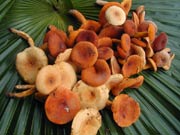 |
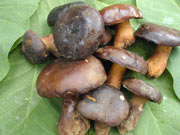 |
|
Nai Jiang Jun (Chinese Name) |
Boletaceae |
Bodiya's medicinal knowledge passed down one generation after another. But his knowledge and the medicines he found are quite limited, and their disseminating areas are also limited. As Buddhism spread to the districts of the Dai folks, some monks who gave sermons knew about medicines; at that time, the Dai folks began to have characters; by combining all these, the monks developed the special Dai medical cares and the Dai medicines. They also wrote a book named
"Danghaya" to describe medicines and medical cares.
|
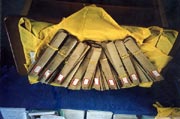
|
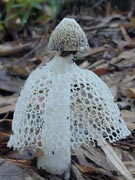
|
|
Pharmacopoeia Written
on the Leaves of Talipot Palm
|
|
|
Dictyophora indusiata
(pres.)Fisch. |
 
|

